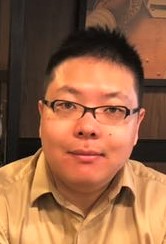
e-mail: xi.jiang@uleth.ca
Phone: (403) 849-8424
Research Interests
Reactivation of spatio-temporal neuronal activity patterns from waking during sleep (“replay”) could be observed both in animal models and in humans, in both the neocortex and hippocampus. While the hippocampus is requisite for the initial formation of novel memory traces, the neocortex distills the “gist” of memories into a statistical model of the world over time, whereby remote memory may become more “semantic” and generalized in nature. The integration of novel memory into the “world model” based on remote memory, then, likely depends on the interaction between the hippocampus and neocortex, with their coordinated replay being a notable candidate. However, it remains unclear whether remote memories reactivate alongside novel memories, or whether interactions occur between novel memory replay and reinstatement of remote memories via exposure to learned stimuli. Further understanding of this process may eventually lead to improved brain-computer interfaces/prostheses that support memory enhancement and artificial implementations of declarative memory-based world models.
Biography
Xi received his doctoral degree in Neurosciences with a specialization in computational neuroscience at the University of California, San Diego. As part of his doctoral thesis (advised by Prof. Eric Halgren), he identified putative large-scale replay of high gamma activity in human neocortex, which is also associated with human sharp-wave ripples. Since hippocampal replay tends to occur alongside sharp-wave ripples, he also examined the coordination between sharp-wave ripples and cortical electrophysiological events associated with memory consolidation, such as sleep spindles and down/up-states. On the basis of these previous studies, he plans to investigate interleaved reactivation of remote and recent/novel memories in rodents in the laboratory of Prof. Bruce McNaughton.
Recent Publications
- Jiang, X., Gonzalez-Martinez, J., Cash, S.S., Chauvel, P., Gale, J., Halgren, E. (2019). “Improved identification and differentiation from epileptiform activity of human hippocampal sharp wave ripples during NREM sleep”. Hippocampus, in press
- Jiang, X., Gonzalez-Martinez, J., Halgren, E. (2019). “Coordination of human hippocampal sharpwave ripples during NREM sleep with cortical theta bursts, spindles, downstates, and upstates”. Journal of Neuroscience, 39(44), 8744-8761.
- Jiang, X., Gonzalez-Martinez, J., Halgren, E. (2019). “Posterior hippocampal spindle ripples co-occur with neocortical theta bursts and downstates-upstates, and phase-lock with parietal spindles during NREM sleep in humans”. Journal of Neuroscience, 39(45), 8949-8968.
- Jiang, X., Shamie, I., Doyle, W.K., Friedman, D., Dugan, P., Devinsky, O., Eskandar, E., Cash, S.S., Thesen, T., Halgren, E. (2017). “Replay of large-scale spatio-temporal patterns from waking during subsequent NREM sleep in human cortex”. Scientific Reports, 7(1), 17380
- Alasfour, A., Gabriel, P., Jiang, X., Shamie, I., Melloni, L., Thesen, T., Dugan, P., Friedman, D., Doyle, W.K., Devinsky, O., Sattar, S., Gonda, D., Wang, S., Halgren, E., Gilja, V. (2019) “Coarse behavioral context decoding”. Journal of Neural Engineering, 16(1), 016021
- Kaestner E., Morgan, A.M., Snider, J., Zhan, M., Jiang, X., Levy, R., Ferreira, V.S., Thesen, T., Halgren, E. (2018) “Toward a database of intracranial electrophysiology during natural language presentation”. Language, Cognition and Neuroscience, DOI: 10.1080/23273798.2018.1500262